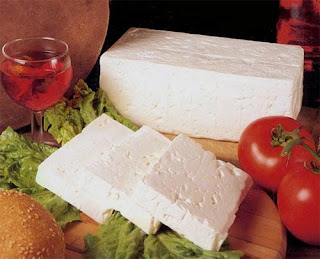After those indispensable basic items of this republic's cuisine, tortillas, chiles and beans, the most important staple of the Mexican kitchen is queso – cheese.
Hernan Cortez conquered the Mexica (Aztec) capital of Tenochtitlan in 1522, and by 1527-28, the conquistadores were introducing cattle into Mexico.
Spain historically was renowned for its cheeses, and the indigenous inhabitants of what abruptly had become Nueva España quickly learned how to make a variety of quesos, which fit exquisitely with their native cuisine. It now is impossible to think of the soups, certainly of the antojitos and tamales of Mexico, without thinking of cheese.
The variety of Mexican cheeses is extensive, many of them mirroring the most flavorsome of Europe. Among the cheeses that are most widely well-known, produced and appreciated here are asadero, queso fresco, panela, quesillo de Oaxaca, manchego, añejo and Chihuahua.
The most delicious of these, of course, are not commercially manufactured but are hand-made at local farms and ranches.
Queso fresco, asadero and panela are the mainstays of most cheese-making family ranches and farms surrounding Guad-alajara.
The most popular and widely used cheese in Jalisco is a fresh, white, crumbly variety called with rural plainness queso fresco. There are several commercially manufactured brands of this "fresh cheese," but they taste exactly like that term – manufactured – in contrast to the rich homemade product.
Queso fresco is ubiquitous here. It's the cheese you find garnishing your tacos, enchiladas, tostadas, chilaquiles and frijolitos refritos, as well as being used to fill chiles rellenos (stuffed peppers).
A pale, cream-colored, moist, crumbly soft cheese, it has a creamy, somewhat mild yet faintly piquant flavor. As its simple name implies, it is not aged, but made daily, and used within a day or two. It traditionally is produced with raw milk and, after clabbering, mashed in a metate (grinding stone). It usually is formed into round cakes by hand or bound in wooden hoops.
Panela is white and damp, salty and semisoft, and easily recognized by the distinctive textured surface that comes from the shallow round baskets in which it is set to drip overnight. Panela owes its popularity both to its gentle price in local public markets and its pleasantly mild, slightly brisk flavor. It usually carries less fat, for part of the cream is skimmed off the milk before it's heated.
It is superb served with refried beans and for the topping of tostadas. As one connoisseur of panela has said, "An astonishingly simple and delectable Mexican dessert consists of equal portions of sliced panela and ate de membrillo -- quince paste."
Some aficionados of panela believe this cheese is even more tasty after it is aged. This is achieved by wrapping it in cheese cloth (manta cielo), and letting it stand for a week or more.
As it ages, the texture grows firmer, the taste sharper and the color a buttery yellow. With a week of aging, panela melts especially well, making it ideal for queso fundido (cheese fondue).
Aging panela for about three weeks also can produce a delectable soft-center cheese. Like Camembert, this aged panela is tastiest when made with milk from cattle grazing on lots of green grass. Thus, the summer rainy season is the ideal time to try it.
Asadero is, literally, "boiler" queso. An aged cheese, it is made, like queso Oaxaca, by adding rennet to warm milk into which some soured milk has been added. When the curd is firm, it's cooked and stirred carefully, in the same direction, over a vigorous flame until tough, skeinlike curds form. These are broken off into lengths, wound into small balls and cooled. Asadero is rather similar to mozzarella in both taste and consistency. However, asadero is slightly softer in texture and sharper in taste.
The process of producing such homemade cheeses has changed only slightly since 1529, though the hygiene has improved greatly. Milk is heated and stirred until the watery whey separates from the curd. Rennet is added. This is the enzyme rennin, prepared from the lining of the fourth stomach of unweaned calves, and possessing the property of curdling milk. Commercially prepared today, it comes in the form of a quickly dissolving pill. (It also has been important in coagulating casein for plastics as well as in medical and pharmaceutical preparations.) This fresh curd (in the case of panela) is kneaded by hand, pressed through sieves and the cheese placed in small baskets and left to set overnight to drip off the remaining whey, then refrigerated.
This time-consuming process, tasting the heady flavors of freshly-made cheese, buttermilk cream and butter, constitutes not only a gourmet's delight, but helps put one in touch with life's basics in an edifying and important way. Like cultivating one's own vegetables or slaughtering one's own meat, such experiences address the fundamentals of the natural world, and help us get back into accord with the primal wisdom -- at once simple and complex -- of nature, of our root animal being.
But it can be if you're not careful.

No comments:
Post a Comment